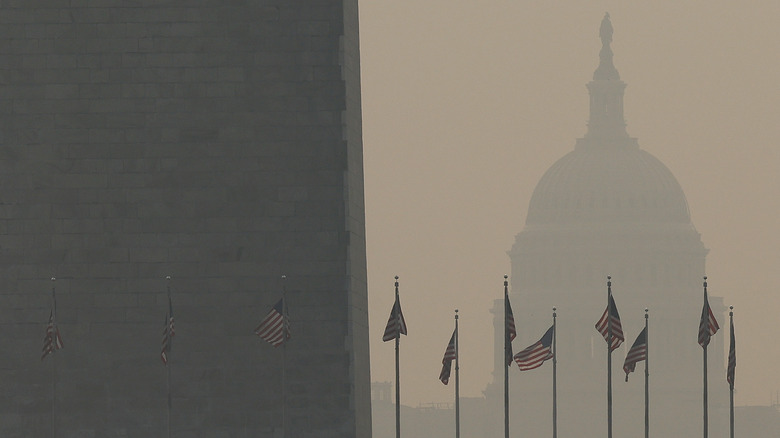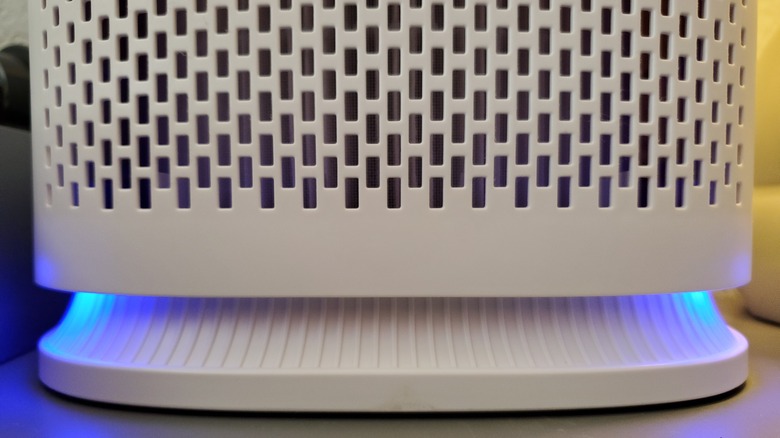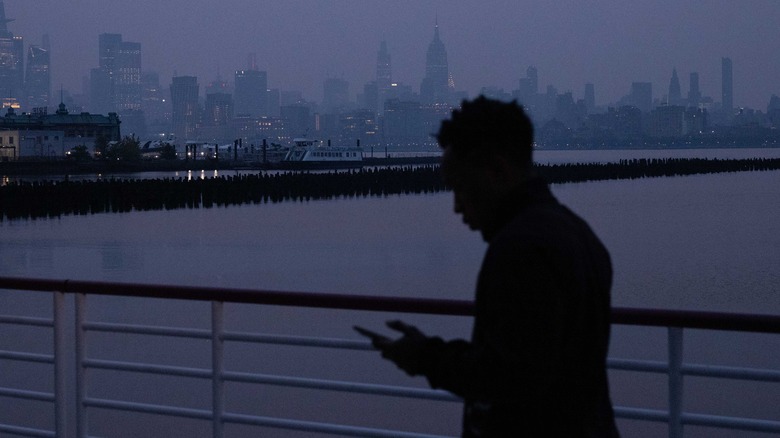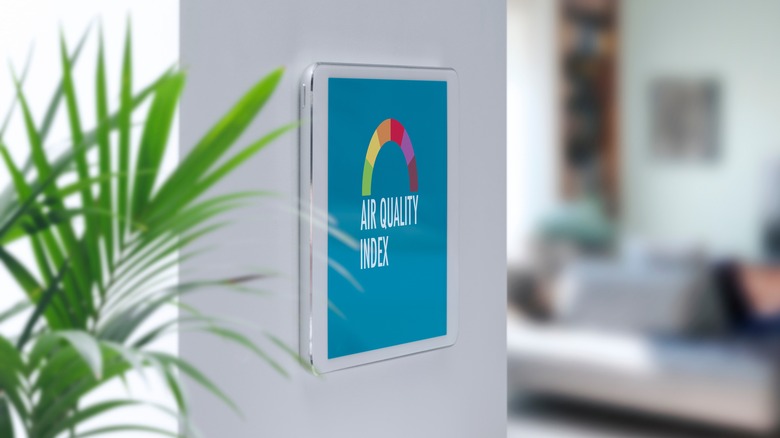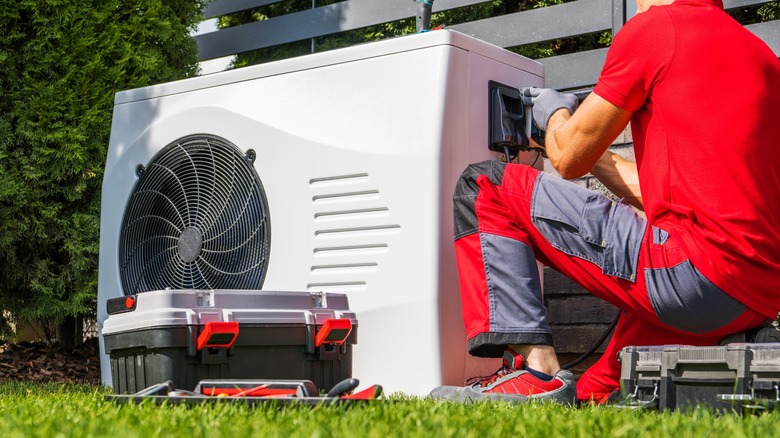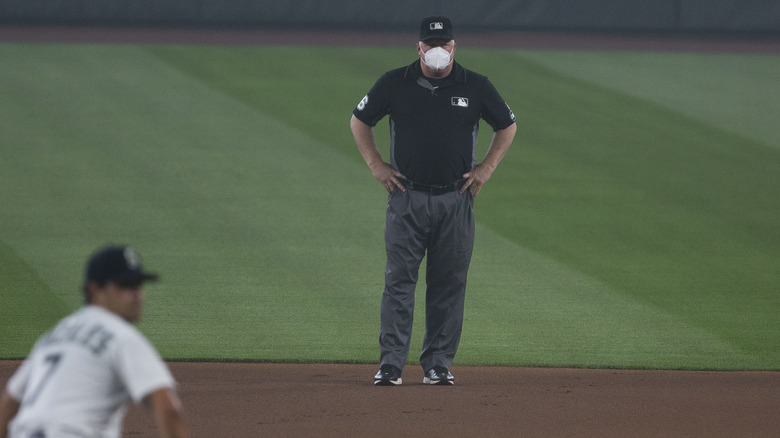Essential Air Quality Tech You Need To Survive Wildfire Smoke
We may receive a commission on purchases made from links.
This week, massive clouds of smoke from wildfires traveled south from Canada to blanket much of the U.S. Filled with smoke and ash particles, the sky took on a brown haze, thick enough for people to look at the sun with the naked eye. Worse, the smoke is an irritant to eyes and throats, and especially a health risk to those with heart and lung problems.
Staying outside and breathing in the air in these affected areas has been comparable to smoking 3 to 11 cigarettes a day. Several government health organizations have urged people to stay indoors if possible until the smoke clears, which could take a few days.
While some parts of the U.S. are becoming more accustomed to days and weeks where air quality is radically affected by wildfire smoke, it's been rarer for it to happen in the Northeastern U.S. On June 6, New York City was reported to have the worst air quality in the world due to the smoke.
Many people in wildfire-prone areas already know there are various types of technology that can help mitigate the effects of smoke, which are becoming more important than ever as climate change increases the size and occurrence of these wildfire events. Here is a list of essential air quality tech you should get to prepare for when wildfire smoke is headed your way.
Air Purifiers
Many people already use air purifiers in their homes, even if they're not accustomed to wildfire smoke. As the technology inside them advances, they've become better than ever at filtering the air inside your home, trapping and removing particles such as dust and other allergens. When nearby wildfires make the air quality dangerously low, many models can be kicked into high gear and do the same for the hazardous particles that make up wildfire smoke.
There's a large market of varying air purifiers. One of the best is the Coway Airmega, which can filter the air in spaces up to 361 square-feet in 12.5 minutes, or up to 874 square-feet in 30 minutes. It continually monitors the air quality around it and ramps up its power based on necessity, and has an Eco mode that will save electricity if the air in your house is already relatively clear. However, the Coway Airmega is pretty expensive, and you may want to go with a different purifier to save money.
Air Quality Apps
Other useful technology includes apps you can install onto your phone to help you keep tabs of the air quality in your area, even on the go. Sometimes the air quality can be very poor, even if it's not as visually striking as the red haze that blanketed the Northeastern U.S. this week. The best way to know for sure if the air is safe to breathe is to use an app that reports data from dedicated sensors built around the world.
Many weather apps will also incorporate air quality data into their daily forecasts. For example, if you scroll down Apple's default Weather app that comes with the iPhone, you'll see an "Air Quality Index" among other stats like wind speed and humidity.
If you're looking for a dedicated app, IQAir will tell you the air quality in your area, as well as in most cities around the world, which is especially useful if you're traveling. It uses a handy color-coded system so you can quickly see how clear the air is at a glance, and can provide daily push notifications and warnings when air quality is especially low.
Air Quality Sensors
Measuring air quality is important because it lets you know when to be extra vigilant about restricting outdoor activities and/or wearing masks. Air quality apps are an easy way to get a general idea of the air quality in your area, but if you want more specific information — especially when it comes to your home — you can also buy sensors that will measure the air in your very close proximity.
Not only are these more accurate than the sensors that are measuring entire cities, but they can warn you of dangers besides headline-making wildfires. These sensors could detect if something burning on the stove is giving off more toxic particles than it should, for example.
Some air purifiers will have built-in sensors, but if you have models that don't, or want more sensors placed throughout your home, you can pick them up and install them relatively easily. Some models, like the VINDSTYRKA from Ikea, are even built to work with smart home infrastructure. Keep in mind that these sensors can only report poor air quality in your home, they can't do anything to mitigate the problem.
Upgraded HVAC Filters
If you're wondering if the heating, ventilation, and air conditioning (HVAC) systems installed in your office or home can filter out the toxic particles of wildfire smoke — the answer is yes, but they might not necessarily be doing so. It all comes down to the Minimum Efficiency Reporting Value (MERV) of the filters they use, and most HVAC units typically use a fiberglass filter with a MERV rating between 1 and 4.
As you can tell from the dystopian photos of wildfire smoke blanketing cities, the particles in smoke are especially dense. For an HVAC filter to safely remove the smallest of these particles, it should have a MERV rating of at least 13.
There are MERV filters rated 5-8, as well as those rated 9-12, but you'll have to get the best of the best to truly protect yourself from wildfire smoke. It's likely that your furnace or HVAC system can accommodate a filter rated MERV 13 or higher, but some cannot without damaging the equipment, so you may have to consult an HVAC technician before upgrading.
N95 Masks
Another piece of essential air quality protection may seem fairly low-tech, but that doesn't make it any less effective. Face masks received a lot of attention after COVID-19 spread across the planet, and have been a high-valued piece of equipment for medical personnel for a long time before that.
However, masks are also very important when dealing with fires and poor air quality. The same filtering principles behind face masks (namely trapping particles before they reach your nose, mouth, and lungs) applies not just to viruses and bacteria, but also the tiny particles found within wildfire smoke.
Just as with COVID, any face mask is better than nothing, but to truly protect yourself, you'll want one that can filter out the finer particles of smoke. The EPA recommends using NIOSH-approved respirators like N95 masks. Make sure they're attached correctly and cover your face tightly so that no smoke or dangerous air is being allowed in unfiltered.
On days where air quality is poor, especially to the point where the sun is being blotted out, you should try to stay indoors as much as possible. That being said, if you do need to go outside, make sure you strap on a clean N95 mask and carry around a few spares in case you or someone you know needs one.
